Hemingway’s style is characterized by extreme simplicity. A short, simple sentence is almost exclusively a depiction of tangible reality and visual movement. Dialogue plays a fundamental role in conveying the atmosphere surrounding the characters and their constant presence. It allows the character to present himself through his movements, apparent emotions, and the words he utters. Here, the reader’s role in creating the image the author intended to portray becomes clear. He participates in creating this character with its original creator, the author. This collection was written at the height of his creative powers. These stories, with his rare talent, are composed of characters, dialogue, and insightful settings that only Hemingway’s imagination can depict. Wife hunters, wise old men, waiters, boxers, beloved women, lost women: all of these people live on the dangerous edge, make love, and face the inevitable reality of death.
In Our Time: The Snows of Kilimanjaro and Other Stories
د.ا5.00
It is a collection of short stories by Ernest Hemingway, dealing with themes such as death, loss, and personal conflict, in his distinctive style that blends simplicity with depth.
Available on backorder
| Categories: | Literature, Novels, stories, World literature |
|---|---|
| Tags: | literature, Novels, stories, World Literature |
| Author | |
|---|---|
| Year |
You may also like…
-
Men Without Women
د.ا5.00This collection tells the stories of men facing emotional and physical challenges, reflecting the inner struggle and loneliness of a world filled with pressure.
-
The Short Happy Life of Francis Macomber and Other Stories
د.ا5.00This is a collection of short stories by Ernest Hemingway that addresses themes such as courage and inner conflict through characters dealing with difficult situations. Life and death are crucial.
-
Sola
د.ا4.00This novel follows the life of a complex woman in a society rife with racial and social challenges, as she navigates her identity, friendship, and sacrifice.
-
Things Fall Apart
د.ا10.00The novel sheds light on the impact of Western colonialism on African societies, through the story of the collapse of traditions and values in Nigerian society due to cultural and social changes.
Related products
-
My journey from doubt to faith
د.ا2.13I refused to worship God because I was immersed in worshipping myself and admired the flash of light that began to flash in my mind with the opening of consciousness and the beginning of the awakening from the cradle of childhood.
This psychological state was behind the controversial scene that recurs every day. I also missed the origins of logic and I am dealing with logic and I did not realize that I am contradicting myself as I recognize the Creator and then say who created the Creator and make him a creature at the time when I call him a creator, which is sophistry itself.
Moreover, to say a first cause of existence requires that this cause must exist in itself and not dependent or need others to exist. If a cause needs a cause, this makes it one of the causal links and does not make it a first cause.د.ا3.55 -
Anichatin and relativity
د.ا2.13In this book, its author, Dr. Mustafa Mahmoud, tries in his style known as ease and extreme logic in understanding the theory of relativity of the physicist Albert Einstein so that it suits the understanding and perception of the general public, and in a strong objection to limiting information to a few scientists under the pretext of depth and specialization, which may lead to the isolation of science, supporting in his book what Einstein himself called for to spread science among people, Einstein hated scientific fortune-telling and fabrication of mystery, claim, and magnification, and he used to say that the truth Never mind.
د.ا4.26 -
The Da Vinci Code
د.ا8.52- The Da Vinci Code is a 2003 mystery thriller novel by Dan Brown. It is Brown’s second novel to include the character Robert Langdon: the first was his 2000 novel Angels & Demons. The Da Vinci Code follows symbologist Langdon and cryptologist Sophie Neveu after a murder in the Louvre Museum in Paris entangles them in a dispute between the Priory of Sion and Opus Dei over the possibility of Jesus and Mary Magdalene having had a child together.
د.ا10.65 -
Revolution of 36-39 in Palestine
د.ا2.13Until his early death, Ghassan Kanafani published eighteen books, and wrote hundreds of articles and studies on culture, politics, and the struggle of the Palestinian people. Following his assassination, all of his books were republished in Arabic, in several editions
د.ا3.55 -
One Hundred Years of Solitude
د.ا12.07One Hundred Years of Solitude is a 1967 novel by Colombian author Gabriel García Márquez that tells the multi-generational story of the Buendía family, whose patriarch, José Arcadio Buendía, founded the fictitious town of Macondo. The novel is often cited as one of the supreme achievements in world literature.
د.ا17.75 -
In Zionist literature
د.ا3.55Ghassan Kanafani is a Palestinian novelist, storyteller, and journalist, and is considered one of the most famous Arab writers and journalists in the twentieth century. His literary works, including novels and short stories, were deeply rooted in Arab and Palestinian culture
د.ا4.97 -
Death bed number 12
د.ا3.55Ghassan Kanafani is a Palestinian novelist, storyteller, and journalist, and is considered one of the most famous Arab writers and journalists in the twentieth century. His literary works, including novels and short stories, were deeply rooted in Arab and Palestinian culture
د.ا4.97 -
The Forty Rules of Love
د.ا10.65is a novel written by the Turkish author Elif Shafak,[1][2][3] Her interest in writing this book was influenced by the degree she received in Gender and Women’s Studies.[4] The book was published in March 2009.[5] It is about the Persian mystic poet Maulana Jalal-Ud-Din, known as Rumi and his companion Shams Tabrizi.[6][7] This book explains how Shams transformed a scholar into a Sufi (mystic) through love.[8] More than 750,000 copies of this book were sold in Turkey and France
د.ا12.78





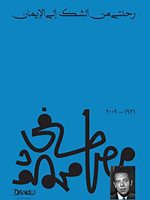
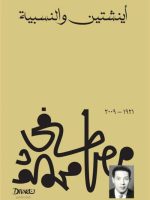
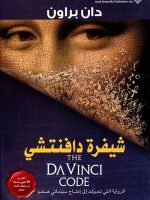
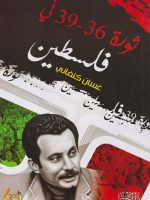
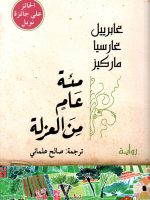

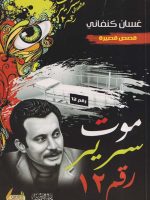
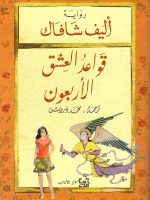
Be the first to review “In Our Time: The Snows of Kilimanjaro and Other Stories”